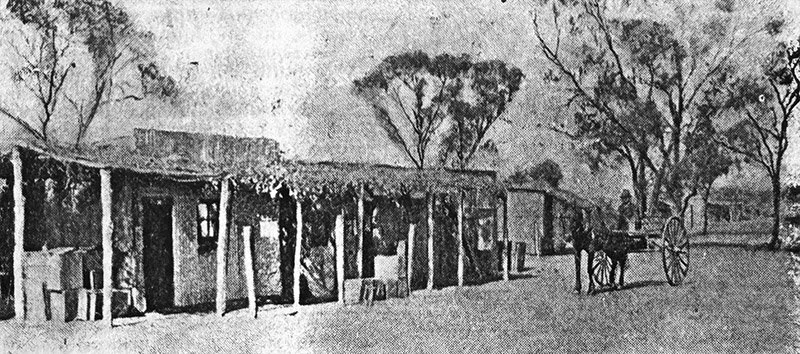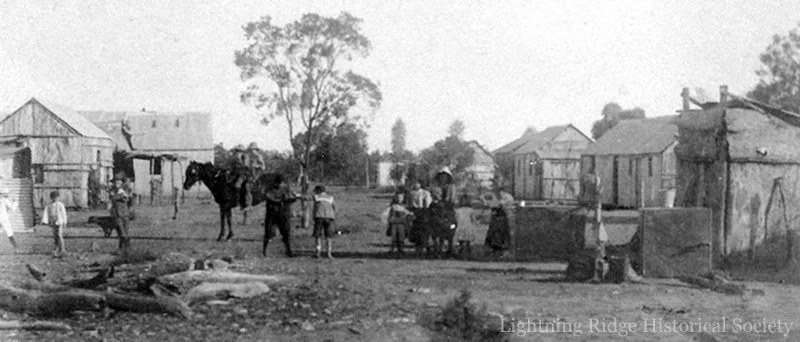The Nettleton Settlement
Nettleton settlement as pictured in the Sydney Mail.
Named for Charlie Nettleton, Nettleton was the second settlement at Lightning Ridge, after Wallangulla.
They were digging nobbies like potatoes on the Three Mile, below Lunatic Hill, so the new settlement sprang up below and to the north-east of the Three Mile field. Nettleton was located on what is now the Three Mile Flat, and comprised a small township with all amenities: a school, shops, boarding houses developed.
Very little remains of the Nettleton settlement today, apart from Fred Bodel’s camp and the former hotel and coach station which is now a private residence.
In its day, Nettleton had its own post office, the postmaster position was much sought-after and held by Walter “Watty” Vause for most of the Nettleton settlement’s years. Vause was staunch about his pay rate and much correspondence was exchanged the Postmaster General. For a short period, Ernie Sherman was caretaker postmaster for Nettleton.
In the 1970s, a fossicker at the Three Mile Flat found a gold-coloured object in the dirt, which was discovered to be the brass postal seal from the Nettleton post office branch.
“Our house was a canvas one, a hessian one and no glass windows just flip-out ones with a prop. The school was like that too. Right on the ridge something had been struck, that’s how it got its name.
[Durrington’s] Store and Hawkins had a boarding house at the Three Mile and I can remember Dad saying he had to have a purse because of the dampness. Someone had given me some money – a shilling, I think – and I was going to buy him a purse. I went down to [Durrington’s] Store, and picked out a little purse that was on the thing and put the shilling down but then took it back home for him in the purse, and I had to take it back down or be accused of stealing!
The Store had a few counters of condensed milk, tins of peas and tins of jam, nothing in bottles like sauce. Clothing was there too at [Durrington’s], a general store – things like singlets or flannels that they wore in those days. My mother made our clothes but Dad cut them out. He could knit too. He taught Mum to knit.”
The settlement began to wrap up in 1911, with the two settlement schools amalgamated into New Town's new building. By 1912, commercial leases on the field were no longer issued and store owners were encouraged to relocate to the surveyed town. The Imperial Hotel opened in the New Town in December of 1909 and was a natural draw into the surveyed community. Miners were interviewed to take up a lease.
Article: Edited by Russell Gawthorpe. LRHS research compiled by Len Cram and Barbara Moritz. Sources: Lightning Ridge - The Home of the Black Opal: Unique to the World, Gan Bruce, 1983, pp. 60-62; A Journey With Colour: A History of Lightning Ridge Opal 1873-2003, Len Cram, 2003, p. 128; Walgett Spectator, 19 August 1931.


